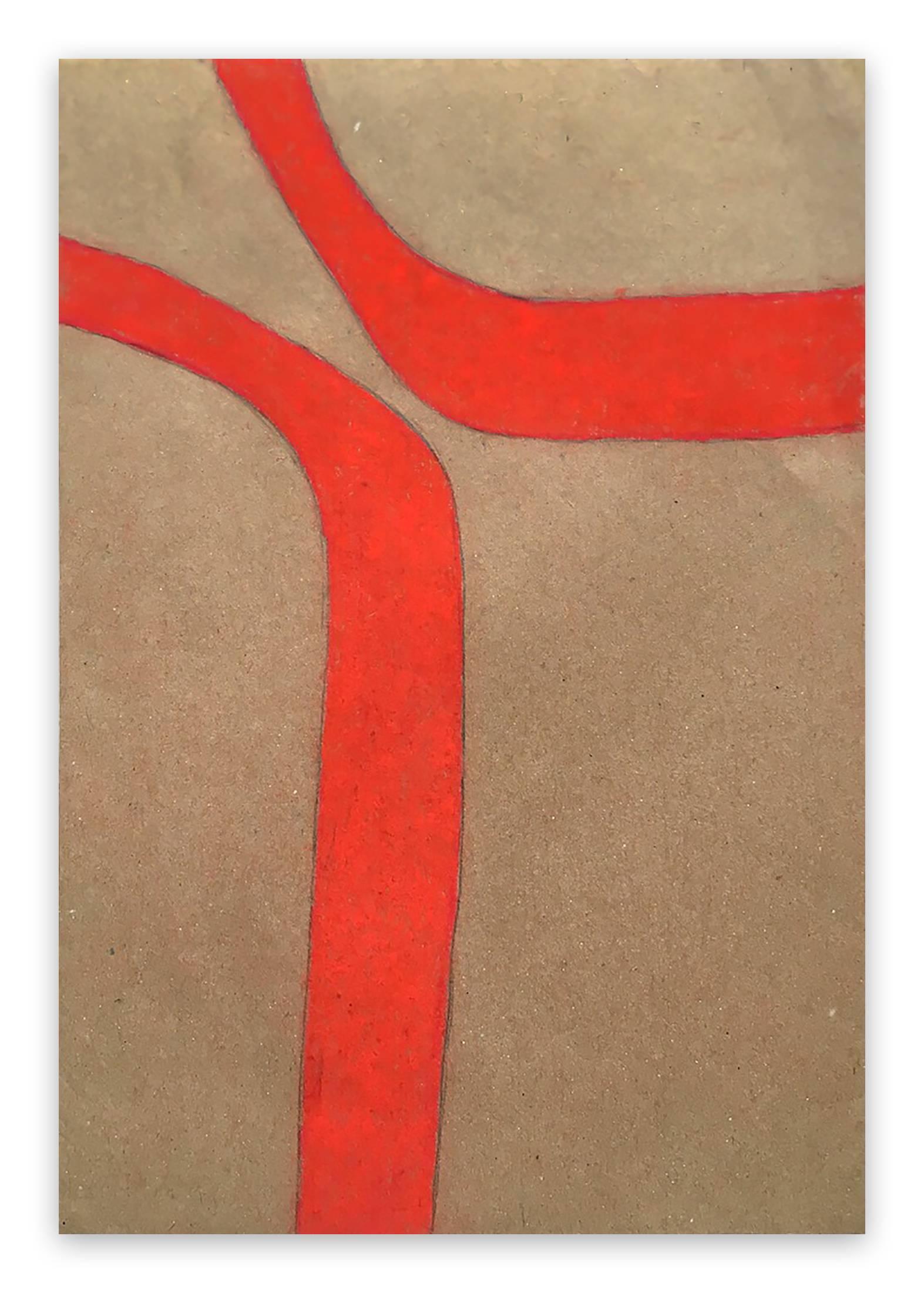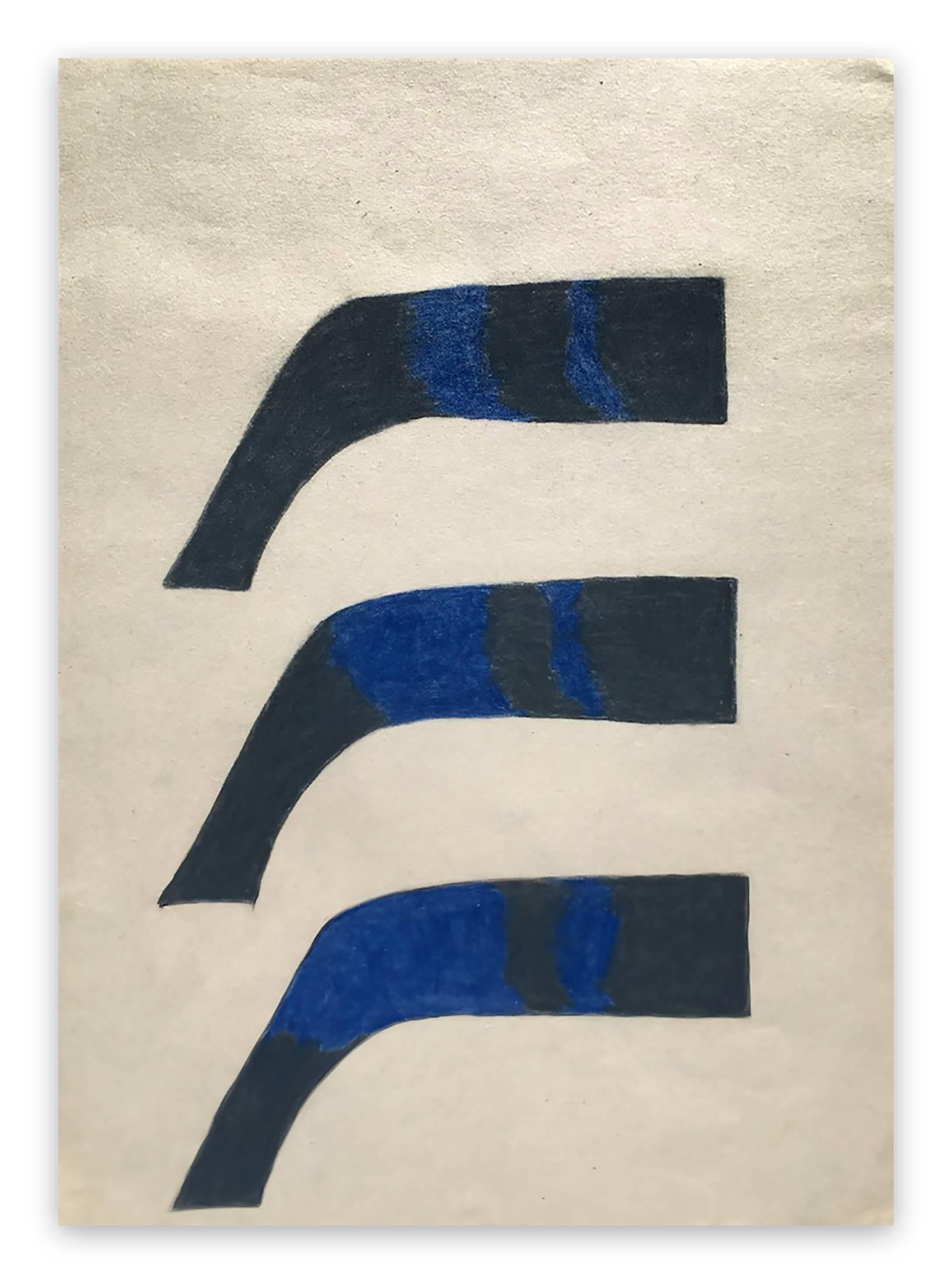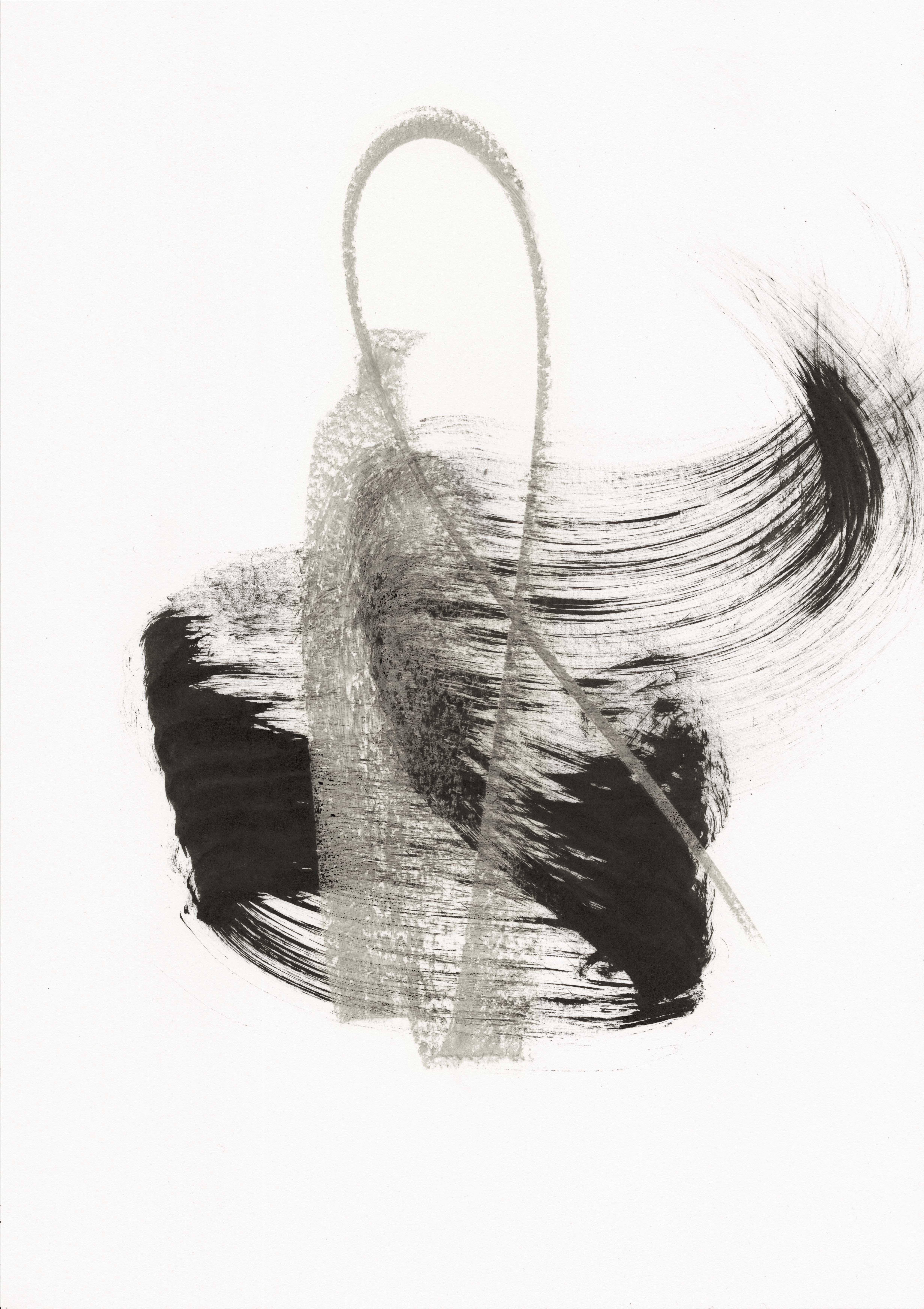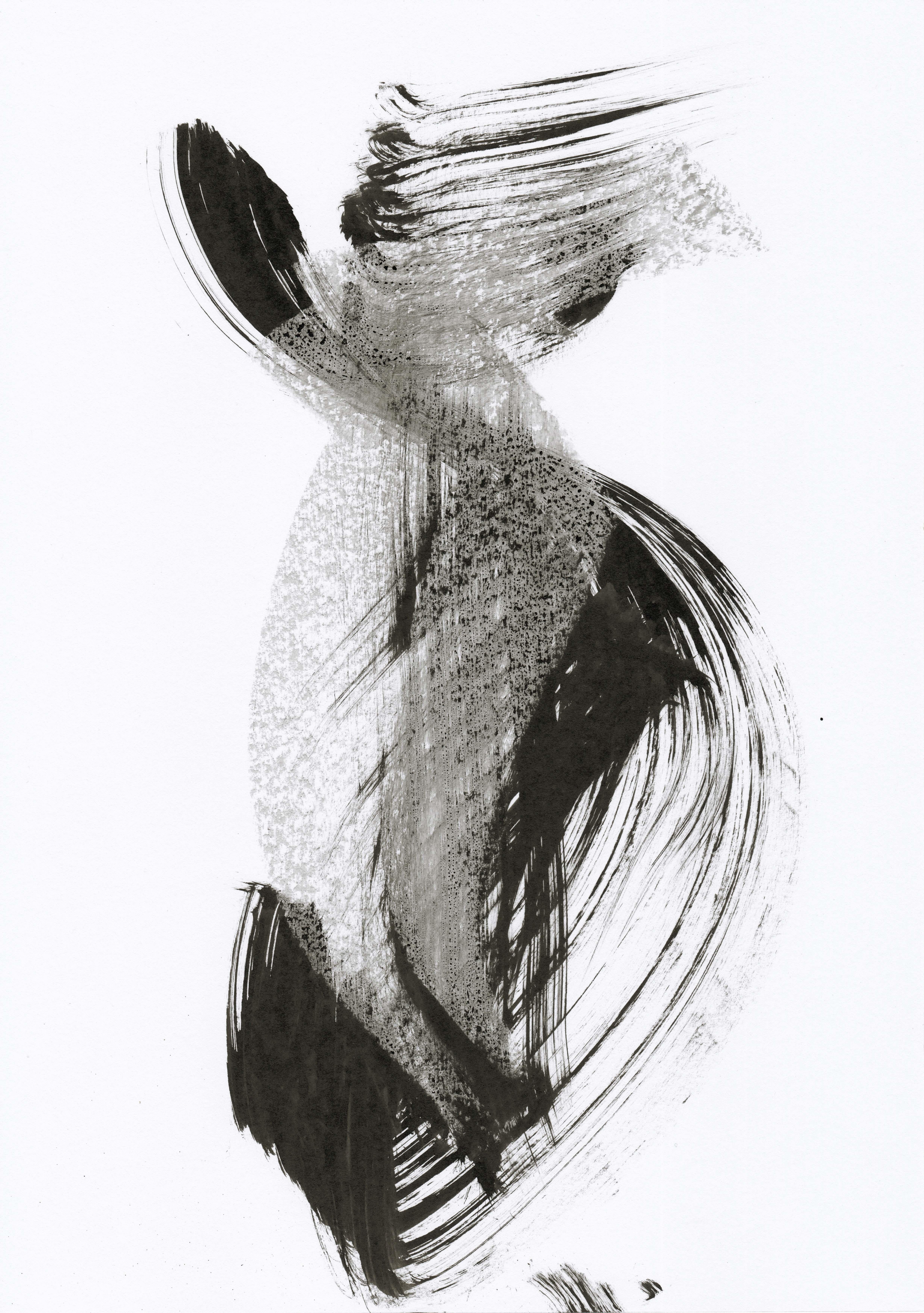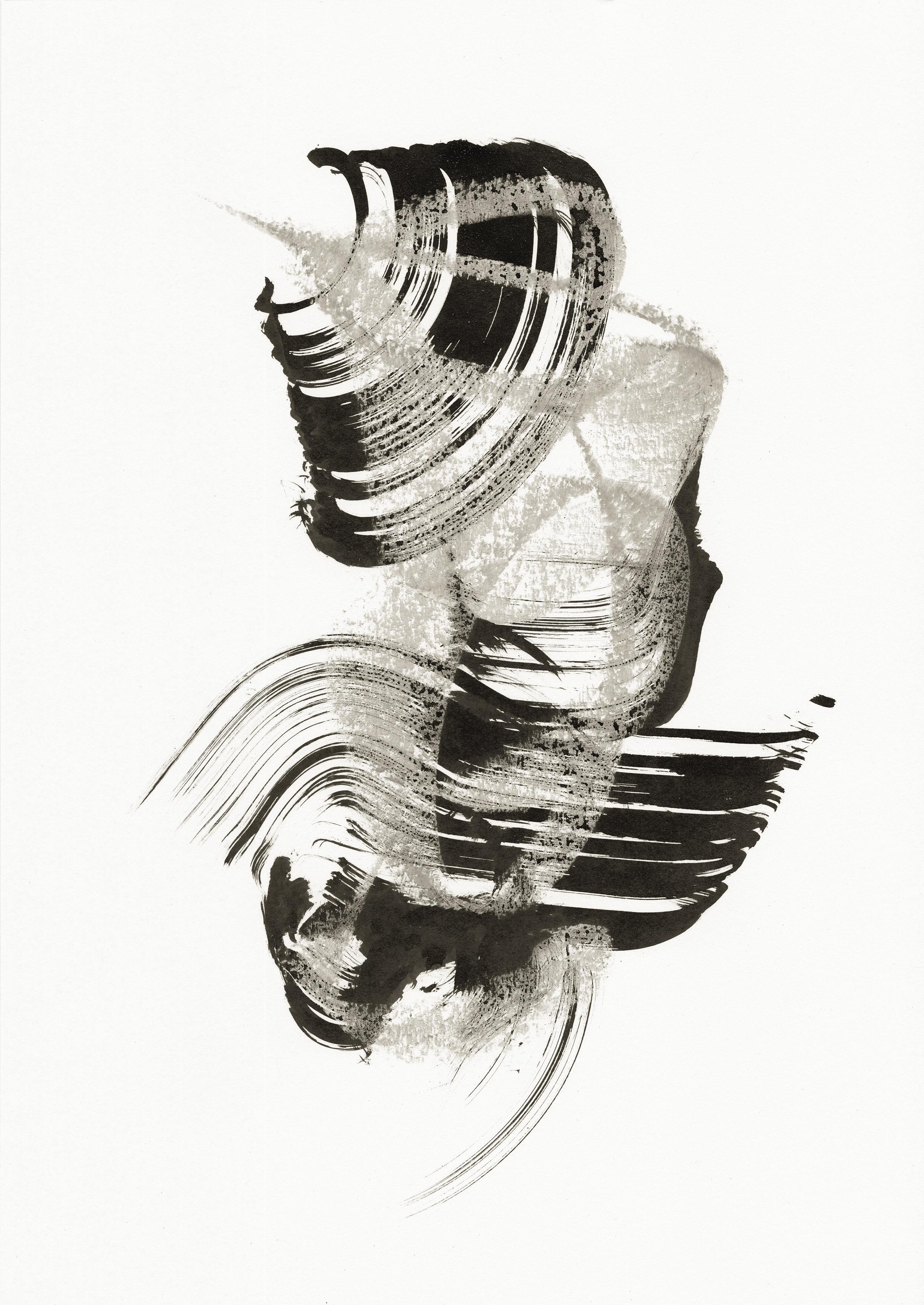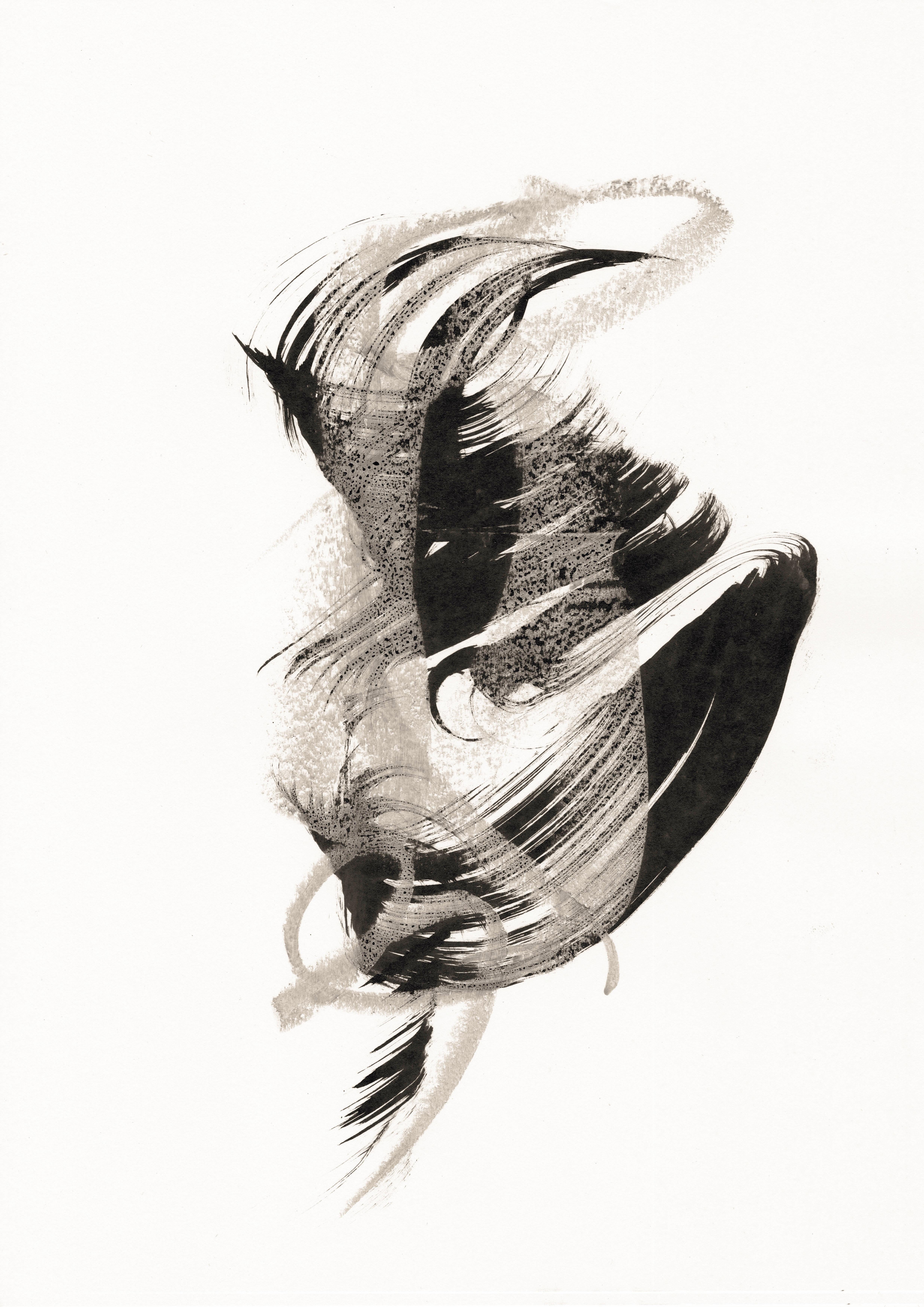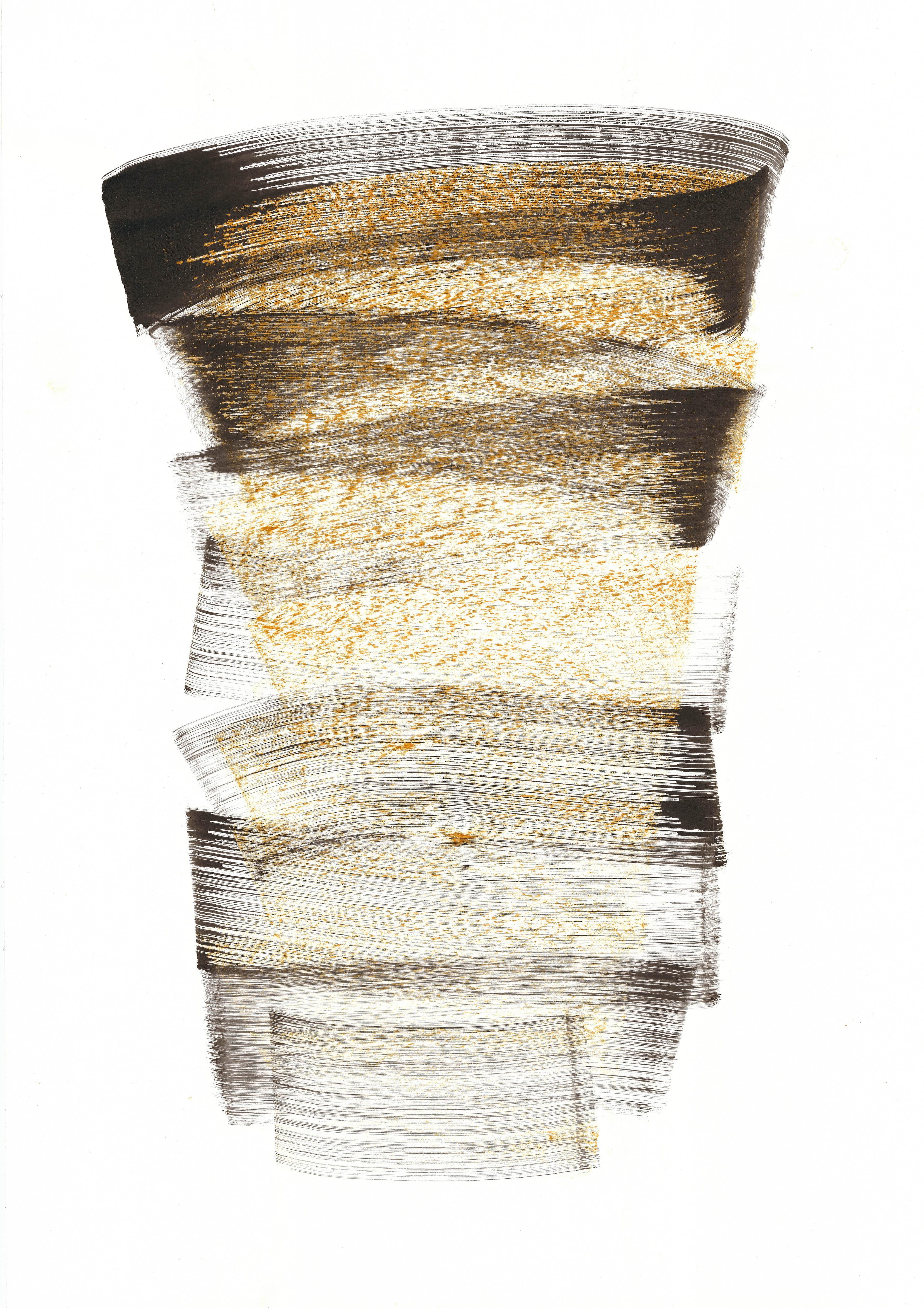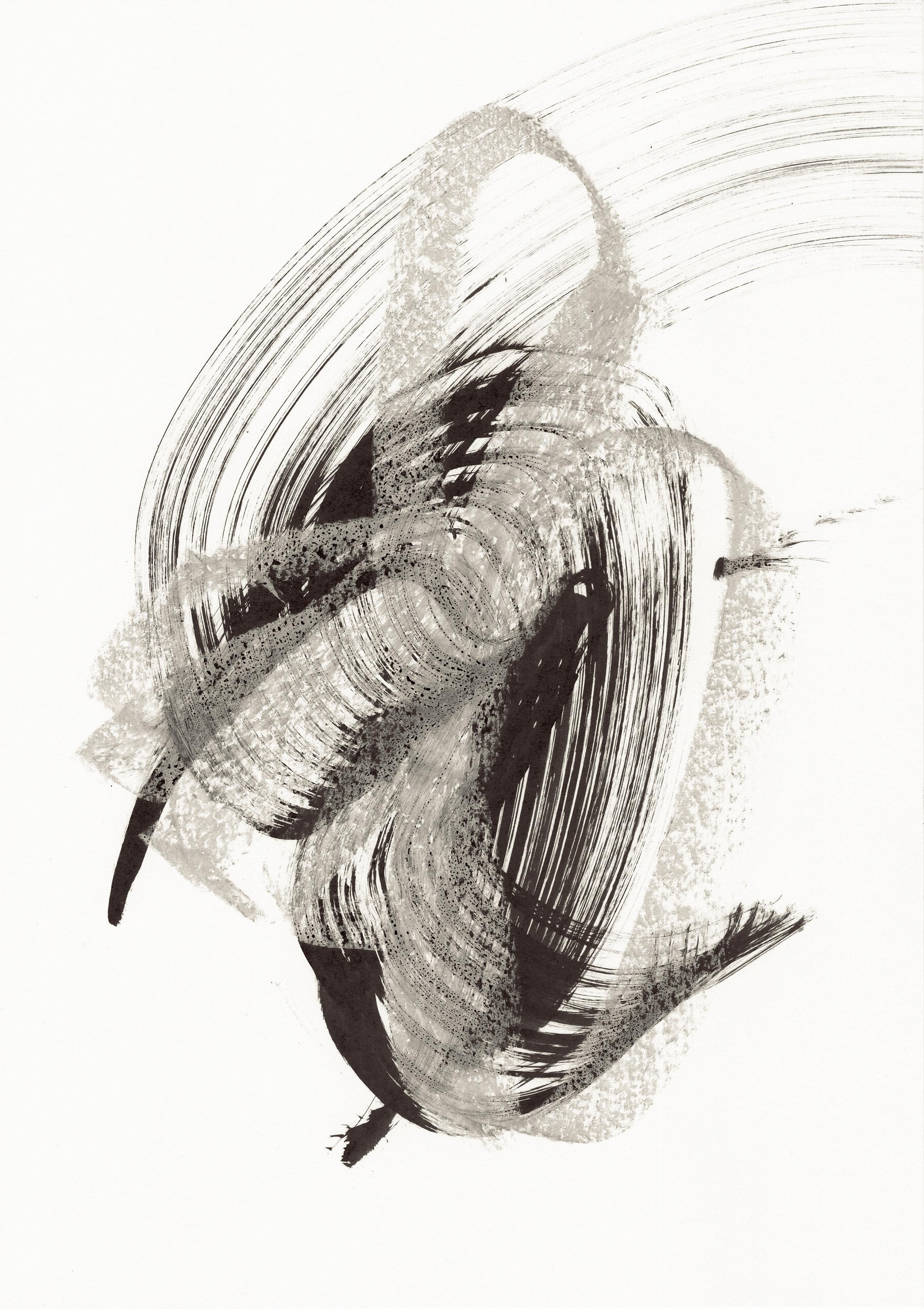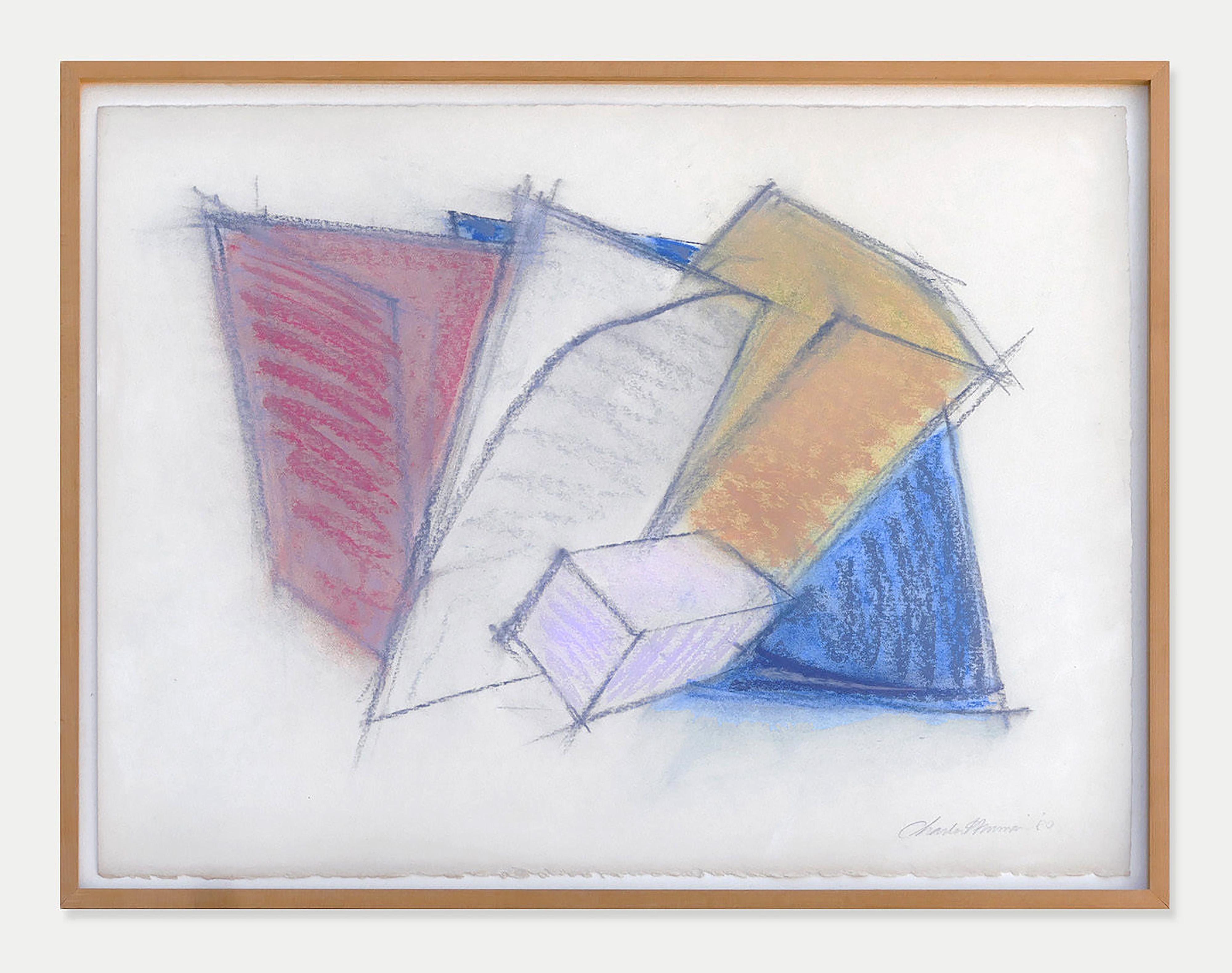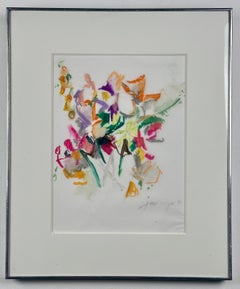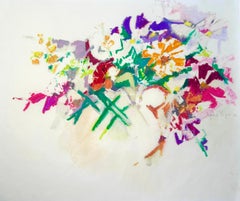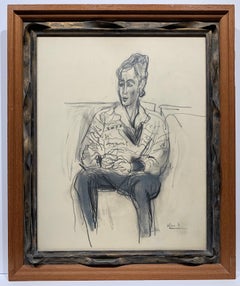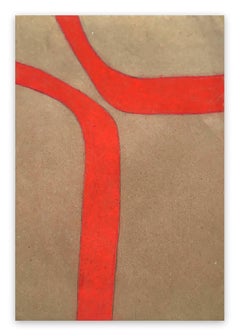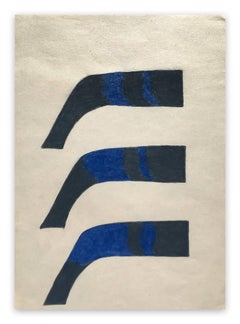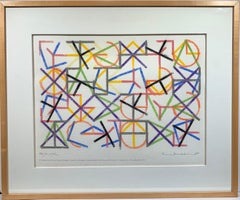
Eight Elements (Minimalist pastel drawing)
View Similar Items
Want more images or videos?
Request additional images or videos from the seller
1 of 13
Bruce BlackburnEight Elements (Minimalist pastel drawing)1996
1996
About the Item
- Creator:Bruce Blackburn (1938)
- Creation Year:1996
- Dimensions:Height: 25 in (63.5 cm)Width: 30 in (76.2 cm)
- Medium:
- Movement & Style:
- Period:
- Condition:
- Gallery Location:Wilton Manors, FL
- Reference Number:1stDibs: LU24527103052
About the Seller
4.9
Platinum Seller
Premium sellers with a 4.7+ rating and 24-hour response times
Established in 2007
1stDibs seller since 2015
396 sales on 1stDibs
Typical response time: 3 hours
Authenticity Guarantee
In the unlikely event there’s an issue with an item’s authenticity, contact us within 1 year for a full refund. DetailsMoney-Back Guarantee
If your item is not as described, is damaged in transit, or does not arrive, contact us within 7 days for a full refund. Details24-Hour Cancellation
You have a 24-hour grace period in which to reconsider your purchase, with no questions asked.Vetted Professional Sellers
Our world-class sellers must adhere to strict standards for service and quality, maintaining the integrity of our listings.Price-Match Guarantee
If you find that a seller listed the same item for a lower price elsewhere, we’ll match it.Trusted Global Delivery
Our best-in-class carrier network provides specialized shipping options worldwide, including custom delivery.More From This Seller
View AllUntitled Floral Still Life
Located in Wilton Manors, FL
Beautiful floral still life by American artist Jane Piper (1916-1991) .
Untitled. 1980.
Pastel, oil crayon and pencil on tracing paper. Image measuring 9 x 12 inches in original ...
Category
1980s Abstract Still-life Drawings and Watercolors
Materials
Parchment Paper, Crayon, Pastel, Pencil
$1,200 Sale Price
40% Off
Untitled Floral Still Life
Located in Wilton Manors, FL
Beautiful floral still life by American artist Jane Piper (1916-1991) . Pastel, oil crayon and pencil on tracing paper. Image measuring 13 x 15.5 inches in ...
Category
1980s Abstract Still-life Drawings and Watercolors
Materials
Parchment Paper, Crayon, Pastel, Pencil
$1,200 Sale Price
40% Off
Untitled Modernist (Abstract Expressionist Figurative Painting)
Located in Wilton Manors, FL
Beautiful Abstract expressionist figure signed Kline. Charcoal on paper measuring 10 x 13 inches. Sheet is glued down to foam board backing. Total measurement 13 x 16 inches.
Category
Mid-20th Century Abstract Expressionist Abstract Drawings and Watercolors
Materials
Paper, Ink
Portrait of Aiko
Located in Wilton Manors, FL
Seiichi Hara (Japanese). Portrait of Aiko, 1972. Pencil, gouache on paper. Sheet measures 16 x 20 inches. Signed lower right and en verso. Custom frame of hardwood with welded steel ...
Category
1970s Abstract Abstract Drawings and Watercolors
Materials
Paper, Gouache, Pencil
Animal Capers (Black Surrealist Artist)
By Roland Ayers
Located in Wilton Manors, FL
Surrealist proto-Afropunk drawing by African-American artist, Roland Ayers (1932-2014).
Animal Capers, ca. 1970 .
Ink on illustration board, image measures 20 inches. inches; illustration panel measures 21.5 inches. Unsigned.
Minor staining evident in detail photos
Artist and art educator, Roland Ayers was born on July 2, 1932, the only child of Alice and Lorenzo Ayers, and grew up in the Germantown district of Philadelphia. Ayers served in the US Army (stationed in Germany) before studying at the Philadelphia College of Art (currently University of the Arts). He graduated with a BFA in Art Education, 1954. He traveled Europe 1966-67, spending time in Amsterdam and Greece in particular. During this period, he drifted away from painting to focus on linear figurative drawings of a surreal nature. His return home inaugurated the artist’s most prolific and inspired period (1968-1975). Shorty before his second major trip abroad in 1971-72 to West Africa, Ayers began to focus on African themes, and African American figures populated his work almost exclusively.
In spite of Ayers’ travel and exploration of the world, he gravitated back to his beloved Germantown, a place he endowed with mythological qualities in his work and literature. His auto-biographical writing focuses on the importance of place during his childhood. Ayers’ journals meticulously document the ethnic and cultural make-up of Germantown, and tell a compelling story of class marginalization that brought together poor families despite racial differences. The distinctive look and design of Germantown inform Ayers’ visual vocabulary. It is a setting with distinctive Gothic Revival architecture and haunting natural beauty. These characteristics are translated and recur in the artist’s imagery.
During his childhood, one of the only books in the Ayers household was an illustrated Bible. The images within had a profound effect on the themes and subjects that would appear in his adult work. Figures in an Ayers’ drawing often seem trapped in a narrative of loss and redemption. Powerful women loom large in the drawings: they suggest the female role models his journals record in early life. The drawings can sometimes convey a strong sense of conflict, and at other times, harmony. Nature and architecture seem to have an antagonistic relationship that is, ironically, symbiotic.
A critical turning point in the artist’s career came in 1971 when he was included in the extremely controversial Whitney Museum show, Contemporary Black Artists in America. The exhibition gave Ayers an international audience and served as a calling card for introductions he would soon make in Europe.
Ayers is a particularly compelling figure in a period when black artists struggled with the idea of authenticity. A questioned often asked was “Is your work too black, or not black enough?” Abstractionists were considered by some peers to be sell-outs, frauds or worse. Figurative* work was accused of being either sentimental or politically radical depending on the critical source. Ayers made the choice early on to be a figurative artist, but considered his work devoid of political content.
Organizations such as Chicago’ s Afri-Cobra in the late 1960‘s asserted that the only true black art of any relevance must depict the black man and woman...
Category
1970s Surrealist Abstract Drawings and Watercolors
Materials
Ink, Archival Paper
Hesitation Blues (Black Surrealist Artist)
By Roland Ayers
Located in Wilton Manors, FL
Surrealist proto-Afropunk drawing by African-American artist, Roland Ayers (1932-2014). Hesitation Blues, 1968. Ink on paper, sheet measures 13 x 23 inches; 14 x 18 inches in archival pH-neutral matting. Signed and dated lower right. Excellent condition with no damage or restoration.
Provenance: Sheila Ayers-Whitelaw
Exhibition History: Roland Ayers: Calligraphy of Dreams, Woodmere Art Museum, 07/10/2021 - 10/24/2021
Artist and art educator, Roland Ayers was born on July 2, 1932, the only child of Alice and Lorenzo Ayers, and grew up in the Germantown district of Philadelphia. Ayers served in the US Army (stationed in Germany) before studying at the Philadelphia College of Art (currently University of the Arts). He graduated with a BFA in Art Education, 1954. He traveled Europe 1966-67, spending time in Amsterdam and Greece in particular. During this period, he drifted away from painting to focus on linear figurative drawings of a surreal nature. His return home inaugurated the artist’s most prolific and inspired period (1968-1975). Shorty before his second major trip abroad in 1971-72 to West Africa, Ayers began to focus on African themes, and African American figures populated his work almost exclusively.
In spite of Ayers’ travel and exploration of the world, he gravitated back to his beloved Germantown, a place he endowed with mythological qualities in his work and literature. His auto-biographical writing focuses on the importance of place during his childhood. Ayers’ journals meticulously document the ethnic and cultural make-up of Germantown, and tell a compelling story of class marginalization that brought together poor families despite racial differences. The distinctive look and design of Germantown inform Ayers’ visual vocabulary. It is a setting with distinctive Gothic Revival architecture and haunting natural beauty. These characteristics are translated and recur in the artist’s imagery.
During his childhood, one of the only books in the Ayers household was an illustrated Bible. The images within had a profound effect on the themes and subjects that would appear in his adult work. Figures in an Ayers’ drawing often seem trapped in a narrative of loss and redemption. Powerful women loom large in the drawings: they suggest the female role models his journals record in early life. The drawings can sometimes convey a strong sense of conflict, and at other times, harmony. Nature and architecture seem to have an antagonistic relationship that is, ironically, symbiotic.
A critical turning point in the artist’s career came in 1971 when he was included in the extremely controversial Whitney Museum show, Contemporary Black Artists in America. The exhibition gave Ayers an international audience and served as a calling card for introductions he would soon make in Europe.
Ayers is a particularly compelling figure in a period when black artists struggled with the idea of authenticity. A questioned often asked was “Is your work too black, or not black enough?” Abstractionists were considered by some peers to be sell-outs, frauds or worse. Figurative* work was accused of being either sentimental or politically radical depending on the critical source. Ayers made the choice early on to be a figurative artist, but considered his work devoid of political content.
Organizations such as Chicago’ s Afri-Cobra in the late 1960‘s asserted that the only true black art of any relevance must depict the black man and woman...
Category
1960s Surrealist Abstract Drawings and Watercolors
Materials
Ink, Archival Paper
You May Also Like
Untitled (ID 1289) (Abstract Painting)
By Fieroza Doorsen
Located in London, GB
Untitled (ID 1289) (Abstract Painting)
Pastel on paper - Unframed
In her abstract drawings, collages and paintings, Fieroza Doorsen brings to life the tensions and harmonies that e...
Category
2010s Minimalist Abstract Paintings
Materials
Paper, Pastel
Untitled (ID 1291) (Abstract Painting)
By Fieroza Doorsen
Located in London, GB
Untitled (ID 1291) (Abstract Painting)
Pastel on paper - Unframed
In her abstract drawings, collages and paintings, Fieroza Doorsen brings to life the tensions and harmonies that e...
Category
2010s Minimalist Abstract Paintings
Materials
Paper, Pastel
Untitled (ID 1289) (Abstract Painting)
By Fieroza Doorsen
Located in London, GB
Untitled (ID 1289) (Abstract Painting)
Pastel on paper - Unframed
In her abstract drawings, collages and paintings, Fieroza Doorsen brings to life the tensions and harmonies that e...
Category
2010s Minimalist Abstract Paintings
Materials
Paper, Pastel
Untitled (ID 1291)
By Fieroza Doorsen
Located in London, GB
Pastel on paper - Unframed
In her abstract drawings, collages and paintings, Fieroza Doorsen brings to life the tensions and harmonies that emerge when structure meets intuition. He...
Category
2010s Minimalist Abstract Paintings
Materials
Paper, Pastel
Untitled (ID 1289)
By Fieroza Doorsen
Located in London, GB
Pastel on paper - Unframed
In her abstract drawings, collages and paintings, Fieroza Doorsen brings to life the tensions and harmonies that emerge when structure meets intuition. He...
Category
2010s Minimalist Abstract Paintings
Materials
Paper, Pastel
Intuitive Zen Drawing. Abstract Minimalism. Monochrome art. A pleasant surprise
Located in Zofingen, AG
"A pleasant surprise"
When something happens that you didn't expect. You are pleasantly surprised and very happy.
This intuitive monochrome drawing is made with Chinese ink and past...
Category
2010s Minimalist Abstract Drawings and Watercolors
Materials
Paper, Pastel, Ink
Recently Viewed
View AllMore Ways To Browse
John Blackburn
Bruce Blackburn
Italian Canvas
Painting Of Skiers
Interior Painting
Paintings Of Trees
Portraits From Photographs
30 By 30 Painting
Antique Oil Painting Frames
Vibrant Abstract Art
Old Paint
What A Price
Ship Signs
New York City Vintage Art
Colorful Paintings
Abstract Geometric Art
Canvas Home
Antique Canvas
